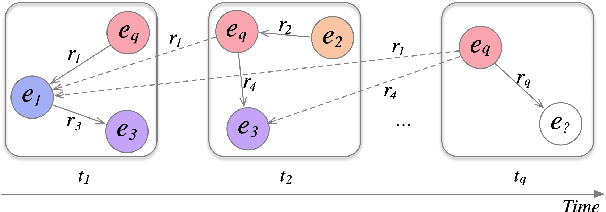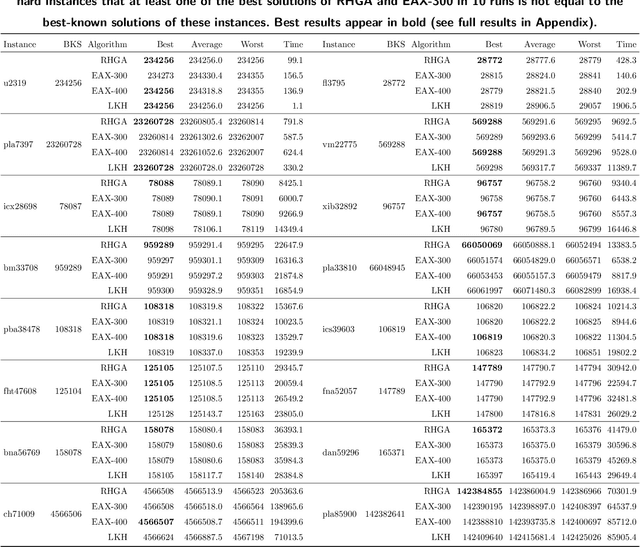Jialun Zhong
GAP: Graph-Assisted Prompts for Dialogue-based Medication Recommendation
May 19, 2025Abstract:Medication recommendations have become an important task in the healthcare domain, especially in measuring the accuracy and safety of medical dialogue systems (MDS). Different from the recommendation task based on electronic health records (EHRs), dialogue-based medication recommendations require research on the interaction details between patients and doctors, which is crucial but may not exist in EHRs. Recent advancements in large language models (LLM) have extended the medical dialogue domain. These LLMs can interpret patients' intent and provide medical suggestions including medication recommendations, but some challenges are still worth attention. During a multi-turn dialogue, LLMs may ignore the fine-grained medical information or connections across the dialogue turns, which is vital for providing accurate suggestions. Besides, LLMs may generate non-factual responses when there is a lack of domain-specific knowledge, which is more risky in the medical domain. To address these challenges, we propose a \textbf{G}raph-\textbf{A}ssisted \textbf{P}rompts (\textbf{GAP}) framework for dialogue-based medication recommendation. It extracts medical concepts and corresponding states from dialogue to construct an explicitly patient-centric graph, which can describe the neglected but important information. Further, combined with external medical knowledge graphs, GAP can generate abundant queries and prompts, thus retrieving information from multiple sources to reduce the non-factual responses. We evaluate GAP on a dialogue-based medication recommendation dataset and further explore its potential in a more difficult scenario, dynamically diagnostic interviewing. Extensive experiments demonstrate its competitive performance when compared with strong baselines.
A Comprehensive Survey of Reward Models: Taxonomy, Applications, Challenges, and Future
Apr 12, 2025Abstract:Reward Model (RM) has demonstrated impressive potential for enhancing Large Language Models (LLM), as RM can serve as a proxy for human preferences, providing signals to guide LLMs' behavior in various tasks. In this paper, we provide a comprehensive overview of relevant research, exploring RMs from the perspectives of preference collection, reward modeling, and usage. Next, we introduce the applications of RMs and discuss the benchmarks for evaluation. Furthermore, we conduct an in-depth analysis of the challenges existing in the field and dive into the potential research directions. This paper is dedicated to providing beginners with a comprehensive introduction to RMs and facilitating future studies. The resources are publicly available at github\footnote{https://github.com/JLZhong23/awesome-reward-models}.
Exploiting Prefix-Tree in Structured Output Interfaces for Enhancing Jailbreak Attacking
Feb 19, 2025Abstract:The rise of Large Language Models (LLMs) has led to significant applications but also introduced serious security threats, particularly from jailbreak attacks that manipulate output generation. These attacks utilize prompt engineering and logit manipulation to steer models toward harmful content, prompting LLM providers to implement filtering and safety alignment strategies. We investigate LLMs' safety mechanisms and their recent applications, revealing a new threat model targeting structured output interfaces, which enable attackers to manipulate the inner logit during LLM generation, requiring only API access permissions. To demonstrate this threat model, we introduce a black-box attack framework called AttackPrefixTree (APT). APT exploits structured output interfaces to dynamically construct attack patterns. By leveraging prefixes of models' safety refusal response and latent harmful outputs, APT effectively bypasses safety measures. Experiments on benchmark datasets indicate that this approach achieves higher attack success rate than existing methods. This work highlights the urgent need for LLM providers to enhance security protocols to address vulnerabilities arising from the interaction between safety patterns and structured outputs.
Leveraging Large Language Model as Simulated Patients for Clinical Education
Apr 25, 2024



Abstract:Simulated Patients (SPs) play a crucial role in clinical medical education by providing realistic scenarios for student practice. However, the high cost of training and hiring qualified SPs, along with the heavy workload and potential risks they face in consistently portraying actual patients, limit students' access to this type of clinical training. Consequently, the integration of computer program-based simulated patients has emerged as a valuable educational tool in recent years. With the rapid development of Large Language Models (LLMs), their exceptional capabilities in conversational artificial intelligence and role-playing have been demonstrated, making them a feasible option for implementing Virtual Simulated Patient (VSP). In this paper, we present an integrated model-agnostic framework called CureFun that harnesses the potential of LLMs in clinical medical education. This framework facilitates natural conversations between students and simulated patients, evaluates their dialogue, and provides suggestions to enhance students' clinical inquiry skills. Through comprehensive evaluations, our approach demonstrates more authentic and professional SP-scenario dialogue flows compared to other LLM-based chatbots, thus proving its proficiency in simulating patients. Additionally, leveraging CureFun's evaluation ability, we assess several medical LLMs and discuss the possibilities and limitations of using LLMs as virtual doctors from the perspective of their diagnostic abilities.
TimeTraveler: Reinforcement Learning for Temporal Knowledge Graph Forecasting
Sep 09, 2021



Abstract:Temporal knowledge graph (TKG) reasoning is a crucial task that has gained increasing research interest in recent years. Most existing methods focus on reasoning at past timestamps to complete the missing facts, and there are only a few works of reasoning on known TKGs to forecast future facts. Compared with the completion task, the forecasting task is more difficult that faces two main challenges: (1) how to effectively model the time information to handle future timestamps? (2) how to make inductive inference to handle previously unseen entities that emerge over time? To address these challenges, we propose the first reinforcement learning method for forecasting. Specifically, the agent travels on historical knowledge graph snapshots to search for the answer. Our method defines a relative time encoding function to capture the timespan information, and we design a novel time-shaped reward based on Dirichlet distribution to guide the model learning. Furthermore, we propose a novel representation method for unseen entities to improve the inductive inference ability of the model. We evaluate our method for this link prediction task at future timestamps. Extensive experiments on four benchmark datasets demonstrate substantial performance improvement meanwhile with higher explainability, less calculation, and fewer parameters when compared with existing state-of-the-art methods.
Reinforced Hybrid Genetic Algorithm for the Traveling Salesman Problem
Jul 09, 2021



Abstract:We propose a powerful Reinforced Hybrid Genetic Algorithm (RHGA) for the famous NP-hard Traveling Salesman Problem (TSP). RHGA combines reinforcement learning technique with the well-known Edge Assembly Crossover genetic algorithm (EAX-GA) and the Lin-Kernighan-Helsgaun (LKH) local search heuristic. With the help of the proposed hybrid mechanism, the genetic evolution of EAX-GA and the local search of LKH can boost each other's performance. And the reinforcement learning technique based on Q-learning further promotes the hybrid genetic algorithm. Experimental results on 138 well-known and widely used TSP benchmarks, with the number of cities ranging from 1,000 to 85,900, demonstrate the excellent performance of the proposed method.
 Add to Chrome
Add to Chrome Add to Firefox
Add to Firefox Add to Edge
Add to Edge